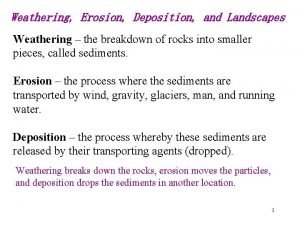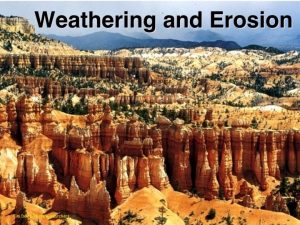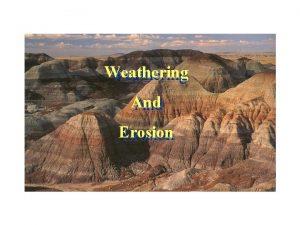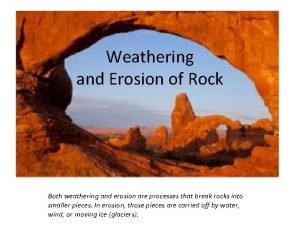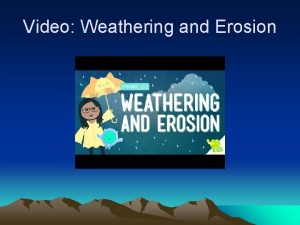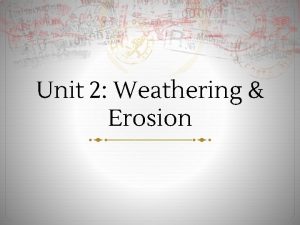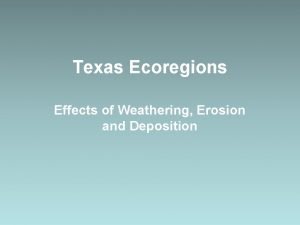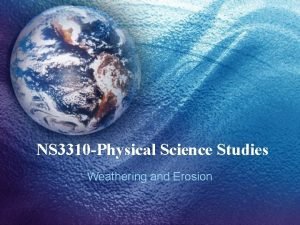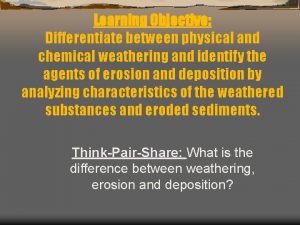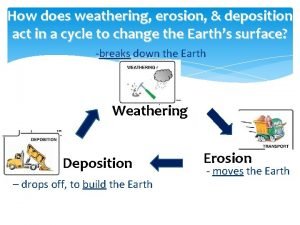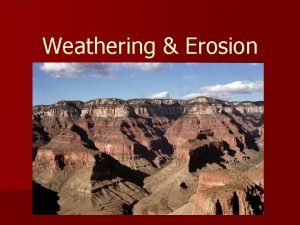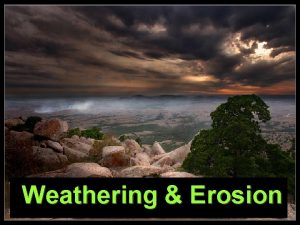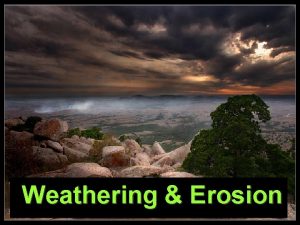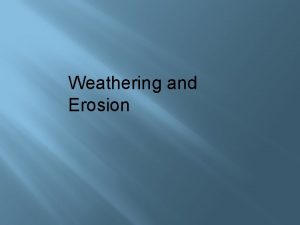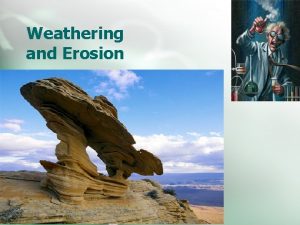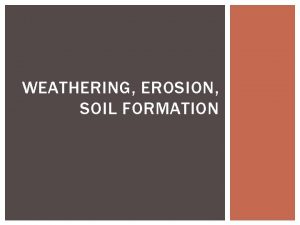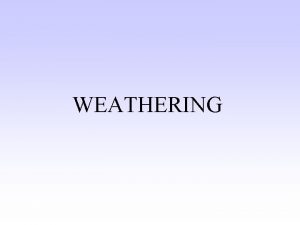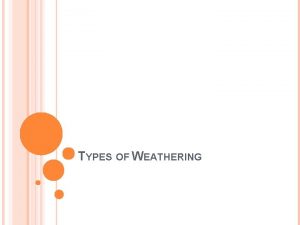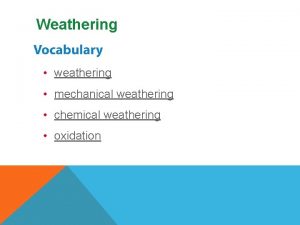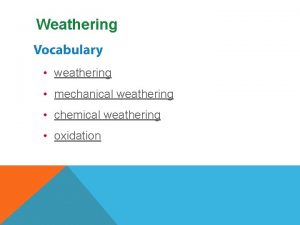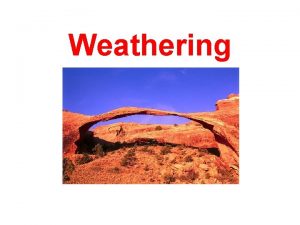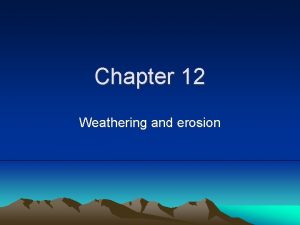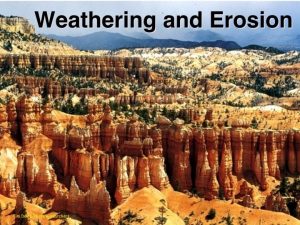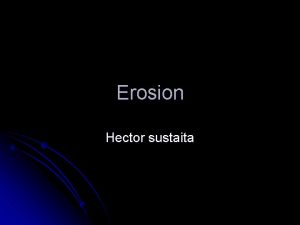WEATHERING EROSION Weathering The process in which rocks

















- Slides: 17

WEATHERING & EROSION

Weathering The process in which rocks on the surface of a planet are broken down into smaller particles. There are 2 types of weathering:

1. Mechanical Weathering The process in which rocks are broken apart physically. The rocks remain the same, they only change size.

Mechanical Weathering Examples Rocks falling and hitting other rocks. Water smashing rocks together. Roots growing in the cracks of a rock causing it to split.

Another Type of Mechanical Weathering Ice Wedging –Ice forms in a crack in a rock night after night causing it to split.

2. Chemical Weathering The process of breaking apart material by chemical means. The rock is dissolved or eaten away.

Examples of Chemical Weathering Acid rain eating away at a rock. Rock rust – the iron in a rock reacting to the oxygen in the atmosphere.

Erosion The process of moving ground material from one place to another. There are 4 main causes of erosion:

1. Wind picks up small particles and moves them to new locations.

Wind Erosion Examples Abrasion – Wind picks up small particles and smashes them into other objects. Dunes – The placement of small particles against a barrier.

2. Water The movement of particles caused by water.

Examples of Water Erosion Stream Erosion – Particles carried by a stream that smash into each other. Gully Erosion – Water carves a path into the ground. Flood Erosion – A thin sheet of water slowly moves surface material.

3. Gravity pulls rocks and soil downward.

Examples of Gravity Erosion Mudslide Rockslide Slump – The movement of soil downward in layers. Creep – The slow movement of soil downhill.

4. Ice The slow movement of glaciers that pick up surface material and move it down hill.

Examples of Ice Erosion Plucking – The picking up and moving of large particles by ice. U-Shaped valleys – Glaciers carve out rounded U-shaped valleys.

Deposition The final placing of material that has been moved by erosional forces.
 Rock cycle
Rock cycle Igneous metamorphic sedimentary
Igneous metamorphic sedimentary Soil erosion diagram
Soil erosion diagram Erosion sedimentary rocks
Erosion sedimentary rocks Edwards plateau weathering erosion deposition
Edwards plateau weathering erosion deposition Agents of soil erosion
Agents of soil erosion The three types of weathering
The three types of weathering Weathering vs erosion
Weathering vs erosion Weathering and erosion jeopardy
Weathering and erosion jeopardy Bill nye
Bill nye Exfoliation definition weathering
Exfoliation definition weathering Weathering and erosion difference youtube video
Weathering and erosion difference youtube video Questions on weathering and erosion
Questions on weathering and erosion Weathering erosion and deposition post oak savannah
Weathering erosion and deposition post oak savannah Deposition in blackland prairies
Deposition in blackland prairies Get5gets.com
Get5gets.com Water erosion
Water erosion Deposition science
Deposition science





